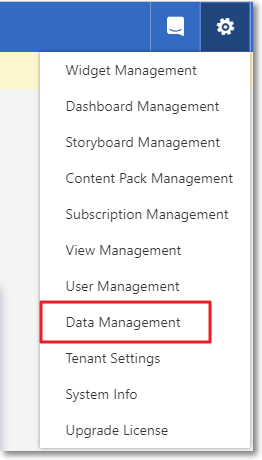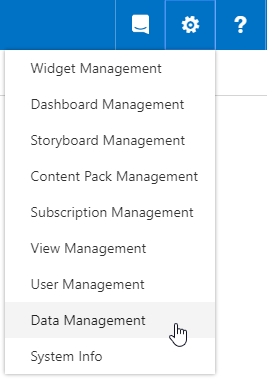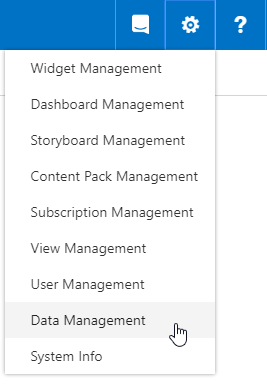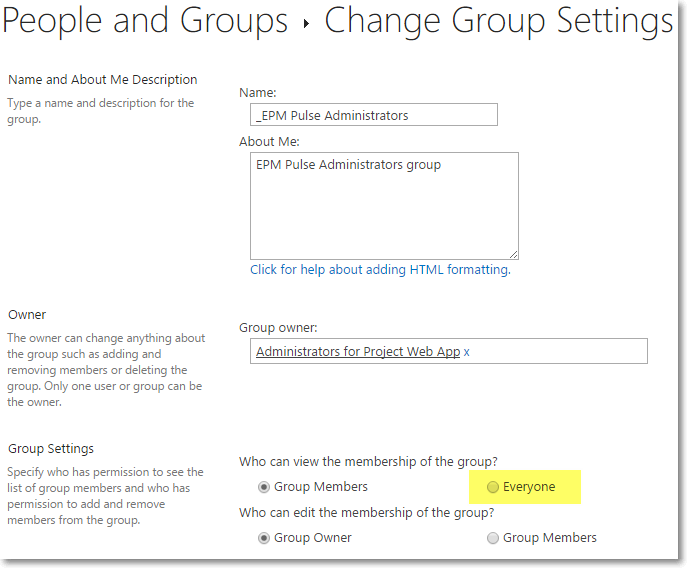Please note: FluentPro Datamart is now based on EPM Pulse technology and therefore it shares some parts of the user interface with FluentPro EPM Pulse.
Data Synchronization Account
EPM Pulse for Project Online does not work with your data directly, it works with data snapshots instead, because Project Online does not allow to build reports against “live” data with a reasonable performance.
EPM Pulse performs data synchronization on a daily basis by default, however, the schedule is adjustable and allows you to set up to 10 data synchronizations per day.
User account that is used for Data Synchronization should meet the following requirements:
- Should have Site Collection Administrator permissions on the site where EPM Pulse Online app is installed.
- In case of SharePoint Permission Mode: should be a member of Administrators for Project Web App group.
-
In case of Project Server Permission Mode: should be assigned to the Administrators security group. To add the user account to this group navigate to PWA Settings → Manage Users → Edit User: User Name → Add the 'Administrators' group to the 'Security Group' section.
Additionally, ensure that the user account is also added to the Web Administrators (Project Web App Synchronized)SharePoint group. - Should have Project Web App license.
Please note: To avoid throttling by Project Online (if data sync fails with 429 error or takes longer than expected) we recommend using separate accounts for each new Project Online connection. Also, it is recommended to use dedicated service accounts instead of personal accounts.
Please note: Permission changes performed in the PWA to the user account that is used as Sync Account are not applied instantly. It is highly recommended to wait for 1-5 minutes after adding the sync account to the required group. To verify if the sync account has the necessary permissions, please navigate to Data Management.

Then click ‘Manage’ to manage connection:

Next click the ‘Verify’ button:

Once the changes are applied you will see the following message: ‘Congratulations! You have all required permissions for EPM Pulse!’.

Please refresh the page, to eliminate the warning ‘Unable to load data from Project Online - Sync Account does not have permissions to perform data synchronization. Read more and Update Connection’.
Data Synchronization Schedule
In order to setup Data Synchronization Schedule:
1. Select the Data Management option from the EPM Pulse Settings menu.

2. Click Manage button next to the data connection for which you want to setup the sync schedule.

3. Sync Schedule section allows setting a day of the week and time when synchronization should automatically run.

4. By default, sync is scheduled to be performed everyday at 2 AM. You can adjust this timing according to your preferences, by removing days of the week or scheduling additional data synchronizations to be performed during the day.
Please note: By default DataMart allows scheduling up to 10 syncs for trial licenses and up to 24 syncs for full licenses for one data connection. If you need to extend this limit it is required to send the corresponding request to our Support Team at support@fluentpro.com.

5. After Data Synchronization Schedule setup is complete, click Save button next to the data connection you are currently managing.

On-demand Data Synchronization
EPM Pulse also allows triggering synchronization manually in case you need the most recent data right now. In order to trigger synchronization manually:
1. Select the Data Management option from the EPM Pulse Settings menu.

2. Click the Refresh Data button next to the data connection for which you need the most recent data.

User Synchronization
Please note, User Synchronization is available in a full license only.
User Synchronization is also performed as part of the Data Synchronization process, therefore, for correct User Sync, the synchronization account should have access to each of the groups that are defined in the User Management section for each of EPM Pulse roles. I.e. this user account should be either a group member or group owner or “Group Settings” should be set to Everyone:

Please note: When you assign the EPM Pulse role to a group user, all users assigned to the corresponding group will be automatically added to User Management after the data synchronization.
In case the number of users in the group exceeds the number of users allowed by the license, EPM Pulse will continue functioning, but with a notification about license violation.
To remove notifications, unassign some users or groups to match the license limits and run synchronization again.
See also How to update Synchronization Account.
Project and SharePoint Sites Filtering for Data Synchronization
Projects that will be included in data synchronization can be filtered out from the Data Management page. This functionality may be helpful if you need to synchronize only specific projects (and the SharePoint lists of these projects) from your PWA to DataMart.
Please note: Data from the Root PWA Site will be also synchronized to DataMart when the projects are filtered out.
Navigate to the Project OData Filter section.
 4. Type in the project filter value. Any OOB or custom project fields can be used to write a query for filtering projects.
4. Type in the project filter value. Any OOB or custom project fields can be used to write a query for filtering projects.
Here are several examples of the filter query with OOB projects fields:
- ProjectLastPublishedDate gt DateTime'2021-01-01T12:00:00.00' - a query to synchronize the projects where the last published date is later than the given date.
- ProjectModifiedDate gt DateTime'2021-05-01T12:00:00.00'- a query to synchronize the projects where the last published date is later than the given date.
- ProjectPercentCompleted gt 0 - a query to synchronize the projects where the %Completed is higher than 0.
These are examples of the filter query with custom project field 'Contractor' of the 'Flag' type:
- Contractor eq false
- Contractor eq true
These are examples of the filter query with custom project field 'Country' of the 'Text' type with a Lookup Table:
- Country eq 'USA'
- Country eq 'France'
- Country eq 'Italy'
When you start typing a filter value, the 'Verify' button appears using which you can check if the filter value is provided correctly.

If the filter is provided correctly the number of filtered out projects that will be included in the synchronization will be shown at once.

If you have a new project added to your PWA and it fits the filter value, it will be also included in the data synchronization.
